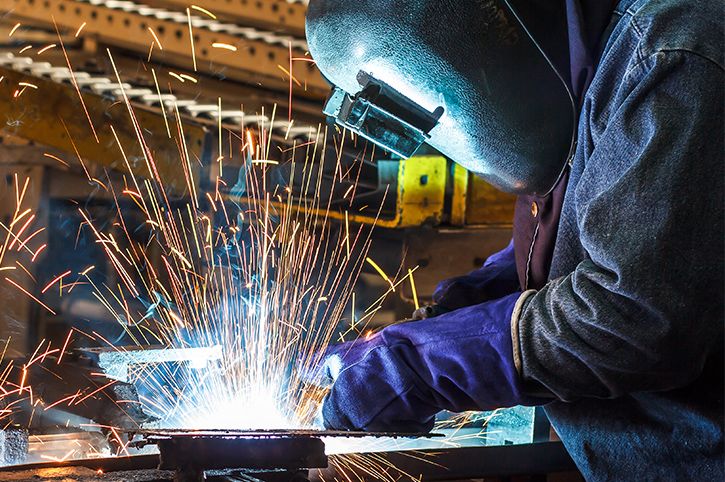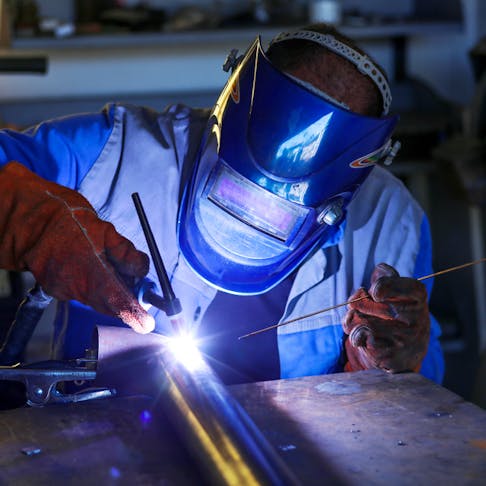Frequent causes of weld misalignment and Belgrade Fabrication’s methods
Wiki Article
Usual Welding Repair Issues and Just How to Address Them Properly
Welding repair work commonly experience a series of issues that can threaten the integrity of the end product. Usual problems include inadequate penetration, porosity, and misalignment, amongst others. Each problem presents one-of-a-kind challenges that need details methods for resolution. Recognizing these concerns is important for welders aiming to improve their abilities and results. This conversation will certainly explore these common welding fixing problems and effective techniques to address them.Insufficient Penetration
Insufficient infiltration takes place when the weld metal fails to completely fuse with the base product, resulting in weak joints and prospective structural failures. This problem frequently comes from inadequate warmth input, wrong electrode angle, or inappropriate welding speed. Welders might experience insufficient penetration due to a miscalculation of the necessary criteria for a certain material density or kind. Furthermore, contamination on the base product's surface area can prevent effective bonding, aggravating the issue. To address insufficient infiltration, welders ought to assure ideal setups on their equipment and maintain a tidy job surface area. Normal evaluation of welds is suggested to recognize any type of shortages early, permitting timely adjustments and the avoidance of endangered structural integrity in bonded assemblies.Porosity
Porosity is an usual issue in bonded joints that shows up as tiny gas bubbles caught within the weld metal. This issue can jeopardize the honesty of the weld, causing decreased stamina and prospective failure under tension. Fabrication. Porosity generally arises from contamination, dampness, or inappropriate welding methods, which enable gases to run away right into the liquified weld swimming pool. To address porosity, welders ought to ensure proper surface preparation, preserve a tidy workplace, and use appropriate welding criteria. Additionally, choosing the appropriate filler product and securing gas can mitigate gas entrapment. Routine evaluation and screening of welds can aid identify porosity early, ensuring timely corrective activities are taken, therefore maintaining the quality and reliability of the welded frameworkImbalance
Imbalance in welding can develop from different variables, consisting of incorrect setup and thermal growth. Comprehending the source is essential for effective resolution. A number of improvement strategies are readily available to realign components and ensure structural honesty.Causes of Imbalance
Welding misalignment typically stems from a variety of underlying issues that can compromise architectural honesty. One primary cause is incorrect fit-up of components prior to welding, which can result in spaces and unequal surfaces. Variants in thermal growth during the welding procedure can also lead to distortion, especially if the materials being signed up with have different coefficients of growth. Additionally, inadequate clamping and fixturing may fail to hold parts securely in position, resulting in activity during welding. Improperly kept equipment, consisting of welding equipments and tools, may present variances in the weld grain, further adding to imbalance. Driver mistake, stemming from not enough training or experience, can likewise play a considerable role in creating misaligned welds.
Adjustment Techniques Readily Available
Addressing imbalance properly calls for a combination of restorative techniques tailored to the particular problems handy. One usual technique is using jigs or fixtures to hold components in the appropriate position during welding, making certain regular positioning. Furthermore, pre-heating the materials can help in reducing distortion and boost fit-up. For significant imbalance, mechanical adjustment strategies, such as utilizing hydraulic jacks or clamps, can be utilized to fix the position before welding. Post-weld warmth treatment may additionally be required to eliminate stresses created by misalignment. Careful inspection and modification throughout the configuration stage can prevent imbalance concerns from becoming significant problems, promoting a smoother welding procedure and enhancing total structural honesty.Distortion
Distortion is an usual difficulty in welding that can develop from different factors, including irregular heating & cooling. Recognizing the sources of distortion is necessary for applying effective prevention techniques. Resolving this issue not only enhances structural stability but also enhances the total quality of the weld.Reasons for Distortion
When based on the extreme heat of welding, products typically undertake adjustments that can result in distortion. This phenomenon mainly arises from thermal expansion and contraction throughout the welding procedure. As the weld location warms up, the product increases; upon cooling, it contracts, which can develop interior stress and anxieties. Additionally, irregular home heating across a workpiece can exacerbate these stresses, resulting in warping or flexing. The type of material also plays a significant duty; steels with differing thermal conductivity and coefficients of development might respond in a different way, resulting in unpredictable distortions. Inadequate joint style and poor fixturing can contribute to misalignment during welding, raising the possibility of distortion. Understanding these causes is vital for effective welding repair work and avoidance approaches.Prevention Techniques
Effective prevention strategies for distortion throughout welding emphasis on regulating warm input and guaranteeing appropriate joint style. Keeping a consistent heat input assists to decrease thermal development and contraction, which can bring about distortion. Making use of methods such as preheating the workpiece can additionally decrease view publisher site the temperature slope, promoting consistent heating. Additionally, selecting appropriate joint styles, such as T-joints or lap joints, can boost stability and lower tension focus. Executing appropriate fixturing to secure the workpieces in area better help in preserving placement throughout the welding procedure. Finally, staggered welding sequences can disperse warm much more uniformly, avoiding localized distortion. By using these approaches, welders can greatly reduce the likelihood of distortion and improve the total high quality of their welds.Fracturing
Fracturing is a typical problem encountered in welding repair services, typically arising from different variables such as inappropriate cooling prices, product choice, or insufficient joint preparation. The event of splits can greatly jeopardize the integrity of the weld, causing potential failings throughout procedure. To address this problem, welders need to first evaluate the origin causes, making sure that materials work and properly picked for the details application. Furthermore, controlling the cooling price during the welding procedure is necessary; fast cooling can generate anxiety and result in splitting. Correct joint style and prep work additionally add to minimizing the risk. Executing these techniques can improve weld quality and longevity, eventually lowering the possibility of splitting in finished weldments.
Insufficient Blend
A significant problem in welding repairs is incomplete fusion, which takes place when the weld metal does not sufficiently bond with the base product or previous weld passes - Montana Mobile Welding and Repair Belgrade Welding. This problem can lead to weaknesses in the joint, potentially jeopardizing the integrity of the bonded framework. Variables contributing to insufficient combination consist of insufficient warmth input, improper welding strategy, and contamination of the surfaces being joined. To address this problem effectively, welders should guarantee correct pre-weld cleaning and surface prep work, as well as adjust their welding parameters to accomplish appropriate penetration and combination. Regular inspection during the welding process can additionally aid determine incomplete blend early, enabling prompt rehabilitative steps to improve the overall quality of the weldOverheating
While welding repair services can boost architectural integrity, overheating presents a substantial challenge that can bring about material degradation. Excessive warmth during welding can alter the mechanical residential properties of steels, causing lowered strength, boosted brittleness, and warping. This sensation is particularly critical in high-stress applications where structural integrity is vital. Determining getting too hot can involve aesthetic inspections for staining or distortion, as well as checking temperature level throughout the welding process. To reduce the risks related to get redirected here getting too hot, welders need to employ suitable strategies, such as controlling warmth input, changing traveling speed, and using ideal filler products. Additionally, applying pre- and post-weld warmth treatments can aid bring back product buildings and boost the general top quality of the fixing, making certain lasting performance and safety and security.Often Asked Inquiries
What Are the Usual Indications of a Welding Defect?

Exactly How Can I Examine My Welds for Quality?
To test welds for top quality, one can make use of aesthetic evaluations, ultrasonic testing, and radiographic techniques. Each strategy assures architectural honesty, recognizes problems, and verifies go adherence to defined standards, ultimately enhancing the reliability of the bonded joints.What Security Safety Measures Should I Take While Welding?
When welding, one should prioritize security by using ideal individual protective equipment, ensuring proper ventilation, protecting flammable products away, keeping a clean office, and recognizing environments to avoid mishaps and injuries.Can I Repair a Weld Without Redesigning the Entire Joint?
Repairing a weld without redoing the entire joint is possible, relying on the damages (Montana Mobile Welding and Repair Belgrade). Methods such as grinding, adding filler material, or using a welding procedure can efficiently deal with certain problems while preserving the bordering structureWhat Equipment Are Vital for Efficient Welding Repair Works?
Important devices for efficient welding repairs include a welding maker, wire brush, grinder, protective equipment, clamps, and filler products. Each tool plays an essential function in making sure quality and safety and security during the repair procedure. Porosity usually arises from contamination, dampness, or incorrect welding techniques, which permit gases to leave right into the molten weld pool. Inadequately maintained tools, including welding makers and devices, may introduce variances in the weld bead, further contributing to imbalance. When subjected to the intense heat of welding, products typically undergo modifications that can lead to distortion. Cracking is a typical issue come across in welding fixings, typically resulting from numerous factors such as incorrect cooling rates, product option, or inadequate joint prep work. A substantial issue in welding fixings is insufficient fusion, which happens when the weld metal does not appropriately bond with the base product or previous weld passes.Report this wiki page